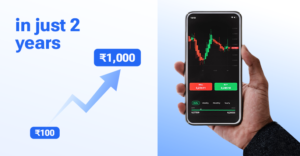Introduction
Building wealth over the long term is akin to constructing a sturdy house; it requires a solid foundation and strategic planning. In the realm of investments, creating a balanced portfolio is that foundation, providing stability and growth opportunities. This article explores the intricacies of building a balanced portfolio for long-term wealth creation.
Understanding a Balanced Portfolio
Stocks
Stocks represent ownership in companies, offering high returns with higher risk. Investors become shareholders, participating in the company’s success or failure.
Bonds
Bonds provide fixed income, offering stability compared to stocks. They are less volatile and contribute to a balanced portfolio by reducing overall risk.
Real Estate
Real estate investments offer steady income through rent and potential appreciation. However, they require upfront investment and ongoing maintenance.
Commodities
Commodities include raw materials and offer inflation protection. However, they can be more volatile, requiring careful consideration in a balanced portfolio. You can also take the help of a commodity tips provider to minimize the risk.
Cash
Cash provides liquidity and security but generally yields lower returns. It plays a crucial role in balancing risk in a diversified portfolio.
Benefits of a Balanced Portfolio

Risk Reduction
Diversification across asset classes lowers the risk of substantial losses. If one sector performs poorly, others may compensate, reducing overall portfolio risk.
Stability
Bonds and cash provide stability and income during market downturns. This helps investors weather economic uncertainties without significant financial impact.
Improved Returns
Over the long term, diversification may outperform individual asset classes. A balanced portfolio harnesses the potential for growth while mitigating risks associated with a single investment type.
Peace of Mind
Knowing investments are well-diversified instills confidence and allows investors to focus on other aspects of life. A balanced portfolio offers a sense of security and peace of mind.
Building Your Balanced Portfolio
For Young Investors
With a long investment horizon, allocate a larger portion to stocks (60-70%) and less to bonds (30-40%). The higher risk tolerance aligns with the potential for higher returns over time.
For Moderate Investors
Aim for a balanced 50/50 split between stocks and bonds. This approach balances growth potential with risk mitigation, suitable for investors with a moderate risk appetite.
For Conservative Investors
Allocate more to bonds (60-70%) and less to stocks (30-40%). Conservative investors prioritize stability and income, accepting lower returns in exchange for reduced risk.
Seeking Professional Advice
Individual circumstances vary, and seeking advice from a financial advisor is crucial. A professional can tailor recommendations based on specific goals, risk tolerance, and market conditions.
Rebalancing Your Portfolio
Periodically rebalance your portfolio, ideally once or twice a year. As the values of different asset classes fluctuate, buying or selling assets helps maintain the target allocation. This ensures the portfolio remains aligned with your financial goals.
Conclusion
Building a balanced portfolio is a fundamental step in long-term wealth creation. Diversifying across asset classes and managing risk sets the foundation for financial success. Tailor your portfolio to your individual needs and goals, and with careful planning and monitoring, pave the way for a secure and prosperous future.
FAQs
- How often should I rebalance my portfolio?
- Rebalancing once or twice a year is generally recommended to align with market fluctuations.
- Why is diversification important in a portfolio?
- Diversification spreads risk, reducing the impact of poor performance in one sector on the overall portfolio.
- Can a balanced portfolio help during economic downturns?
- Yes, stability from bonds and cash in a balanced portfolio can help mitigate losses during market downturns.
- What factors should I consider when building my portfolio?
- Consider risk tolerance, investment timeframe, and financial goals to tailor your portfolio accordingly.
- Is professional advice necessary for portfolio management?
- Seeking advice from a stock advisory company is advisable to ensure a customized approach based on individual circumstances.
Subscribe to our Credits-Based Research System:
Pay only for successful research calls!
FAQs:
-
1. How to earn money daily from trading?
Earning money daily from trading involves strategies like day trading, where traders capitalise on small price movements within the same day. Success requires real-time market analysis, quick decision-making, and risk management.
-
2. How to earn money from equity trading?
To earn money from equity trading, you need to buy stocks at a lower price and sell them at a higher price. Success depends on researching companies, analysing stock trends, and using technical or fundamental analysis.
-
3. How to earn money from share trading in India?
In India, share trading offers profit potential through buying and selling stocks on exchanges like the NSE and BSE. To maximise returns, traders should use market research, tools like technical analysis, and risk management strategies.
-
4. How to make money from share trading in India?
Making money from share trading involves selecting the right stocks, timing the market, and implementing trading strategies like swing trading or day trading while staying informed about market trends.
-
5. How to transfer money from a trading account to a bank account?
To transfer money from your trading account to your bank, log into your trading platform, navigate to the funds section, and initiate a withdrawal request. The money will typically be credited to your linked bank account in 1 to 3 days.
-
6. How to withdraw money from a trading account?
You can withdraw funds by logging into your trading account, selecting the withdrawal option, and selecting the amount to transfer to your bank account. Ensure your bank account is linked and follow any steps your broker requires.










